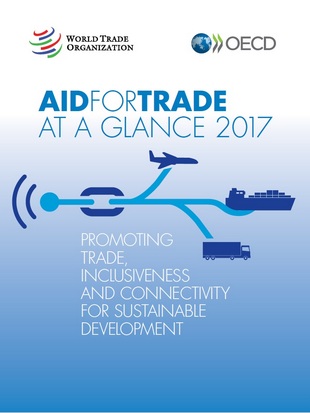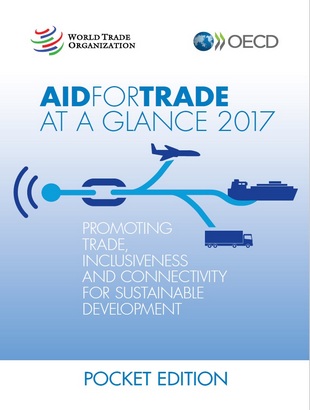  | |
Since 2007, successive editions of the Aid for Trade at a Glance publication have shed light on the steps being taken by developing country governments, and their development partners, to leverage trade for development. The sixth edition of this flagship report focuses on inclusiveness and connectivity to show how and why trade connectivity is critical for inclusiveness, sustainable growth and poverty reduction. Physical connectivity enables the movement of goods and services to local, regional and global markets. Digital connectivity now intertwines with physical connectivity. Digital networks have rapidly become integral to global trade, and offer opportunities for growth as a market place.
Accessible and affordable digital connections are indispensable for trade connectivity. Yet the Internet remains unavailable to 3.9 billion people globally, many of whom live in the least developed countries (LDCs). The 2030 Agenda for Sustainable Development include targets for universal and affordable access to the internet. Mobile broadband networks are now available for more than 50% of the population in LDCs, but digital devices and fixed network connections remain high in price, and limited in coverage. Affordability remains a key barrier to higher levels of ICT use.
ITU contributed chapter 5 to report to highlight how growth in ICT infrastructure, connectivity, access and use promise great development opportunities. At the same time, the full potential of the Internet remains untapped, as over half the world's population remains offline. Unless policy-makers address infrastructure, affordability but also broader socio-economic challenges outside the ICT ecosystem, the Internet is liable to reinforce existing inequalities, instead of addressing them. This chapter analyses progress but also the gaps that exist in developing countries—and in particular the least developed countries—in terms of infrastructure, connectivity and quality of service, particularly for mobile and fixed-broadband Internet. It addresses some key connectivity bottlenecks and points to recommendations to overcome these. The chapter looks at fixed- and mobile- broadband prices, and the affordability of services in developed and developing regions. In addition to addressing supply-side barriers, it examines demand-side barriers outside the ICT ecosystem, including broader socio-economic inequalities, digital and analogue skills, and the availability of relevant local content.
